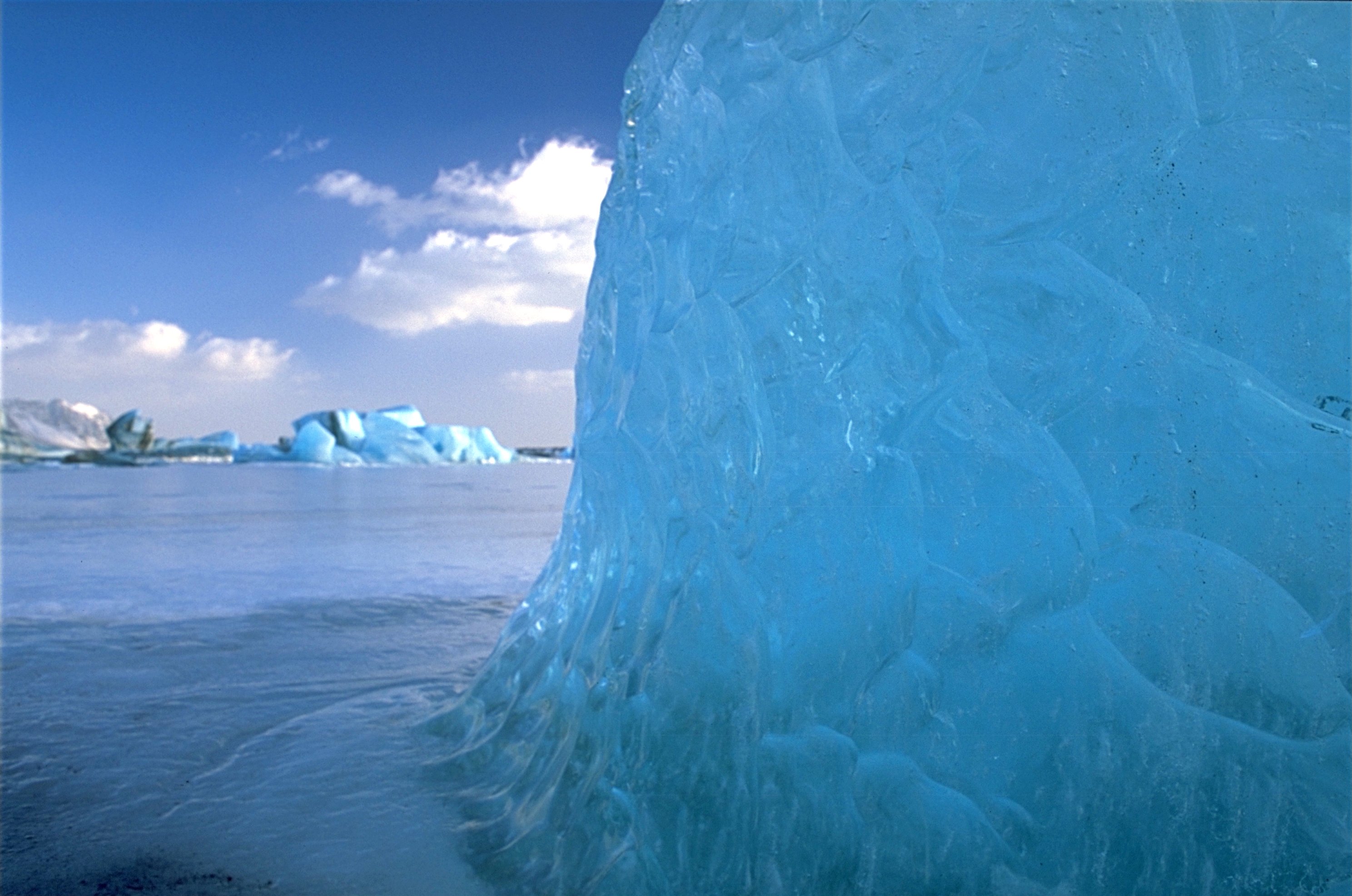Blue Ice (glacial) on:
[Wikipedia]
[Google]
[Amazon]
 Blue ice occurs when
Blue ice occurs when
 Blue ice is exposed in areas of the
Blue ice is exposed in areas of the
Glaciology of Blue Ice Areas in Antarctica
* {{glaciers Bodies of ice Glaciology
 Blue ice occurs when
Blue ice occurs when snow
Snow consists of individual ice crystals that grow while suspended in the atmosphere—usually within clouds—and then fall, accumulating on the ground where they undergo further changes.
It consists of frozen crystalline water througho ...
falls on a glacier
A glacier (; or ) is a persistent body of dense ice, a form of rock, that is constantly moving downhill under its own weight. A glacier forms where the accumulation of snow exceeds its ablation over many years, often centuries. It acquires ...
, is compressed, and becomes part of the glacier. During compression, air bubbles are squeezed out, so ice crystals enlarge. This enlargement is responsible for the ice's blue colour.
Small amounts of regular ice appear to be white because of air bubbles inside and also because small quantities of water appear to be colourless. In glaciers, the pressure causes the air bubbles to be squeezed out, increasing the density of the created ice. Water is blue in large quantities, as it absorbs other colours more efficiently than blue. A large piece of compressed ice, or a glacier, similarly appears blue.
The blue color is sometimes wrongly attributed to Rayleigh scattering
Rayleigh scattering ( ) is the scattering or deflection of light, or other electromagnetic radiation, by particles with a size much smaller than the wavelength of the radiation. For light frequencies well below the resonance frequency of the scat ...
, which is responsible for the color of the sky. Rather, water ice is blue for the same reason that large quantities of liquid water are blue: it is a result of an overtone
An overtone is any resonant frequency above the fundamental frequency of a sound. (An overtone may or may not be a harmonic) In other words, overtones are all pitches higher than the lowest pitch within an individual sound; the fundamental i ...
of an oxygen–hydrogen (O−H) bond stretch in water, which absorbs light at the red end of the visible spectrum
The visible spectrum is the spectral band, band of the electromagnetic spectrum that is visual perception, visible to the human eye. Electromagnetic radiation in this range of wavelengths is called ''visible light'' (or simply light).
The optica ...
. So, water owes its intrinsic blueness (as seen after > 3 meters of penetration) to selective absorption in the red part of its visible spectrum. The absorbed photons drive vibrational (normally infrared) transitions.
Once blue ice is exposed to warmer air, cracks and fissures appear in surface layers, and break up the large blue crystals of dense, pure ice. Within hours these air filled fissures cloud the surface making the ice appear white. The blue colour will not be seen again until the ice breaks or turns over to expose ice which air could not reach. For example, tourists at Tasman Glacier, New Zealand
New Zealand () is an island country in the southwestern Pacific Ocean. It consists of two main landmasses—the North Island () and the South Island ()—and List of islands of New Zealand, over 600 smaller islands. It is the List of isla ...
in January 2011 saw an iceberg roll over to reveal startling blue ice, kept from air by staying underwater for months since the iceberg calved.
Antarctic runways
 Blue ice is exposed in areas of the
Blue ice is exposed in areas of the Antarctic
The Antarctic (, ; commonly ) is the polar regions of Earth, polar region of Earth that surrounds the South Pole, lying within the Antarctic Circle. It is antipodes, diametrically opposite of the Arctic region around the North Pole.
The Antar ...
where there is no net addition or subtraction of snow
Snow consists of individual ice crystals that grow while suspended in the atmosphere—usually within clouds—and then fall, accumulating on the ground where they undergo further changes.
It consists of frozen crystalline water througho ...
. That is, any snow that falls in that area is counteracted by sublimation or other losses. Such areas are known as blue-ice areas. These areas have been used as blue ice runways (e.g. Wilkins Runway, Novolazarevskaya, Patriot Hills Base Camp) due to their hard surface, which is suitable for aircraft
An aircraft ( aircraft) is a vehicle that is able to flight, fly by gaining support from the Atmosphere of Earth, air. It counters the force of gravity by using either Buoyancy, static lift or the Lift (force), dynamic lift of an airfoil, or, i ...
fitted with wheels rather than skis
Skis are runners, attached to the user's feet, designed to glide over snow. Typically employed in pairs, skis are attached to ski boots with ski bindings, with either a free, lockable, or partially secured heel. For climbing slopes, ski skins can ...
.
References
External links
Glaciology of Blue Ice Areas in Antarctica
* {{glaciers Bodies of ice Glaciology